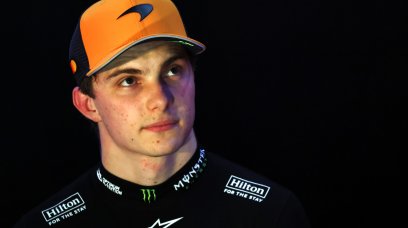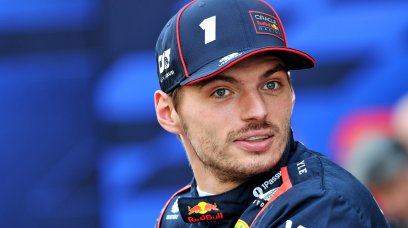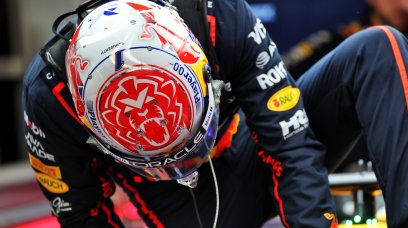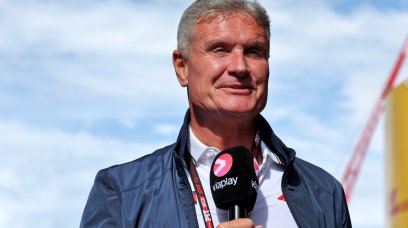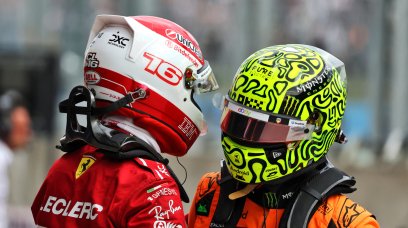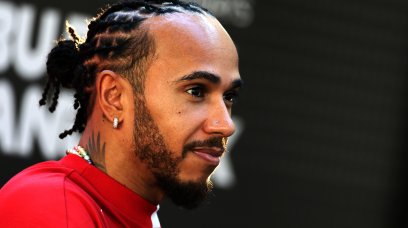The origins of motor racing, whether on two wheels or four, are not hard to fathom: They began when two drivers (or riders) found each other travelling in the same direction, then man’s natural competitive instincts took over. In the beginning, the vehicles were downright dangerous and banned outright in many cities, so rules of engagement needed to be established to ensure order, level playing fields and safety. Thus, the FIA and its two-wheel equivalent, FIM, were established in 1904 - within 20 years of the invention of automobiles and motorcycles. They administer the sporting and mobility elements of their disciplines, with each component complementing the other: motorsport provides technological and marketing platforms for road vehicles, while (increasing) revenues from sales of such products generate budgets to go racing. It is a virtuous circle driven by various synergies. On the flip side, these governing bodies cooperate with national authorities over matters of common interest and lobby the authorities where necessary, so much so that society without orderly personal mobility is unthinkable a century on. However, the arrival of electric scooters - those motorised skateboards - invariably led to widespread criticisms about unruly riding by fringe elements. Global safety standards are still effectively non-existent, leading to regular calls for bans on their use after various incidents resulted in deaths and serious injuries. Yet, e-scooters potentially provide solutions to inner-city congestion and pollution problems – but only if legislated correctly. Here’s a pointer: the e-scooter market was worth over $20bn in 2021 and is expected to grow at 8% annually going forward. There are no doubts e-scooters are here to stay, even in nanny states. F1 PR man Chris Gowland spotted two e-scooter riders drag away from the lights in London while on his way to a meeting. He raved about the potential of e-scooter racing to ex-A1GP racer (Team Lebanon) and MENA F1 commentator Khalil Beschir, who in turn discussed a start-up championship with former BMX champion, F1 driver, Le Mans winner, racetrack architect and GPDA chairman Alex Wurz.
At the same time, technophile racer Lucas di Grassi had similar thoughts, coincidentally outlining these to Wurz during an early morning bike ride in Monaco. They pooled ideas, and the eSkootr Championship (eSC) was born. Crucially, they realised they would first need to establish a dedicated umbrella body for e-scootering - due to its niche nature - in order to regulate eSC and consult with authorities on road safety and legislative matters. “We’re creating a new, accessible sport,” Beschir told RacingNews365.com , during the early stages. “We also plan to help governments and cities to develop safety standards and train and develop riders. “eSC can help develop safety, the infrastructure and e-scooter technologies – much as motorsport does for the car industry.” In setting up the Commission for Micromobility and Sport, the founders turned to folk they had worked with in F1 and elsewhere: Former FIA safety consultant Andy Mellor provides similar expertise to eSC; FIA steward Silvia Bellot is race director, while media and communications are managed by former FIA/F1 team delegates. In fact, the paddock for eSC’s inaugural race - of which more anon - resembled an FIA/F1 reunion! It was, though, hard work persuading the investor community about the potential and relevance of their start-up in order to secure funding and attract the right calibre workforce. Established tech investor Hrag Sarkissian was the amongst the first to join, taking up the role of CEO, and gradually a number of former F1/FIA folk, and sport and entertainment, were brought into eSC.
Once the basic infrastructure was in place, the next step was the framing of regulations that deliver solid, safe, entertaining racing while providing elements of road relevance. Off-the-shelf stuff would not work – no one watches 25km/h stuff - so eSC’s technical team turned to YCOM, an Italian supplier of motorsport componentry, to bring their outline specification to reality. The broad-brush numbers are: overall weight 40kg, two x 9hp electric motors, one per wheel; 1,2kW battery cooled by dry ice; variable brake/throttle mapping to suit rider styles; vegetable oil-based all-weather tyres (slicks proved little faster); 60°lean angle and balance of performance settings to cater for rider weight. All this is packed into carbon fibre chassis with alloy axles and steering heads to ensure rigidity over bumps. “Combining advanced engineering, state-of-the-art electric propulsion technology and competitive riders from across the globe, eSC is a sport like no other,” said Ycom founder Nicola Scimeca of the S1-X. “It may look similar to the electric commuter scooters that are now popular in cities, but it most certainly is not. “Close inspection highlights slick aerodynamic bodywork made from advanced low-emission, natural fibre composites from Bcomp, exotic materials, aggressive motorsport-derived design, suite of sophisticated control features and, of course, powerful motors. The S1-X is a racing machine through and through.” Unsaid is that in time there will also be S2-S4 versions for feeder championships; equally, eSC will not be drawn on future applications, but surely there is a niche for powerful e-scooters in police, security and military ranks. Once the performance factors of S1-X were known, the team turned to circuit matters: their bespoke safety barriers need to be sufficiently resilient to shield crowds but absorbent enough to protect riders. Steep kerbs pitch scooters off-course, yet (temporary) circuits need to be clearly marked to enable riders to respect track limits. Wurz Design set to work, producing barriers and kerbs to Mellor’s stringent standards.
Zi7lYenfKlo
“Another of our primary targets is efficiency and scalability: it takes months of work to build a temporary racetrack for cars – to reduce build and de-rig periods to weeks, maybe even days,” said Wurz, adding that inner city disruption and the series’ carbon footprint needs to be minimised. Lessons learned can be applied elsewhere. Then the search for teams began: F2/3 champions Carlin Motorsport immediately took up a licence, as did Beschir's A1GP buddy Nico Hulkenberg, two-time heavyweight boxing champion Anthony Joshua and cycle road racing champion Nico Roche. Ultimately, ten outfits have committed three entries each to the full six-race series - 30 starters in total. Teams, though, need riders; who to turn to for this brand-new sport? Moto-X? Moto-GP? Extreme sports? Speed skaters or downhill skiers? Karters? BMX? All these sports require superb balance and solid nerves. In the event, riders were drawn from all of the above (plus other) genres, making for fascinating variety and a spread of nationalities for what is a world series and riders representing 16 nationalities in the opening round. The best comment of the first round came from British gold medal speed skating Olympian Elize Christie, who said, “I can’t get my head around the fact that I need to turn right as well as left…” although the downhill BMX contingent seemed equally bemused by competing on level turf of the giant Printworks events venue. The race meeting, held within easy walking distance of London’s Surrey Quays area on the premises of the Printworks events venue, was the acid test. Not only would the concept be (very) publicly rolled out after an intensive two-year gestation period, but global primetime Saturday afternoon sports TV audiences awaited with bated breath. Only then did eSC realise they were competing for eyeballs against Eurovision Song Contest, known as ESC; whether (or not) this subtle abbreviation difference jeopardised internet searches as both terms popped up on search engines is obviously unknown, but, either way, a solid capacity crowd filled the 6000k capacity venue, in which some of The Batman movie scenes had once been shot.
“Because we’re a new sport, we don’t know exactly what our demographic is,” Wurz told RacingNews365.com on the day. “Is it TV? Is it live audiences? Is it 18-25s, or younger? Older? We don’t know yet…” He left no doubts, though, that analysis will follow once all TV ratings are available and ticket sales dissected. The format is simple: The 10 teams / 30 riders - male and female - participate in each event, which consists of a series of heats, with the top four from each progressing to the quarter-finals. The top three quarter-finalists qualify for the semis, with the top three from each semi-final making it through to the final line-up. There are individual and team championships, with points awarded in each group and each round. Races start from BMX-type ramps, with the average at the 400m Printworks course panning out at 60km/h - seriously quick on this tight in/outdoor track. After a tense battle during which the order changed regularly, the final was won by Swiss snowboard/snow scooter champion Matis Neyroud, from British Superbike front-runner Dan Brooks. The podium was completed by Indian Crossfit champion Anish Shetty. “After almost two years since eSC was born and the preparations for this first season began, we have opened the door on a new world of racing and written a special history by launching this championship, which is an advanced step towards a better world,” said a clearly relieved Beschir when the event was over. The second round (of six) takes place this weekend in Sion, Switzerland ahead of races in Italy, France and Spain before the season finale is hosted by a yet-to-be-determined venue in the USA. TV coverage details are available here .
Most read
